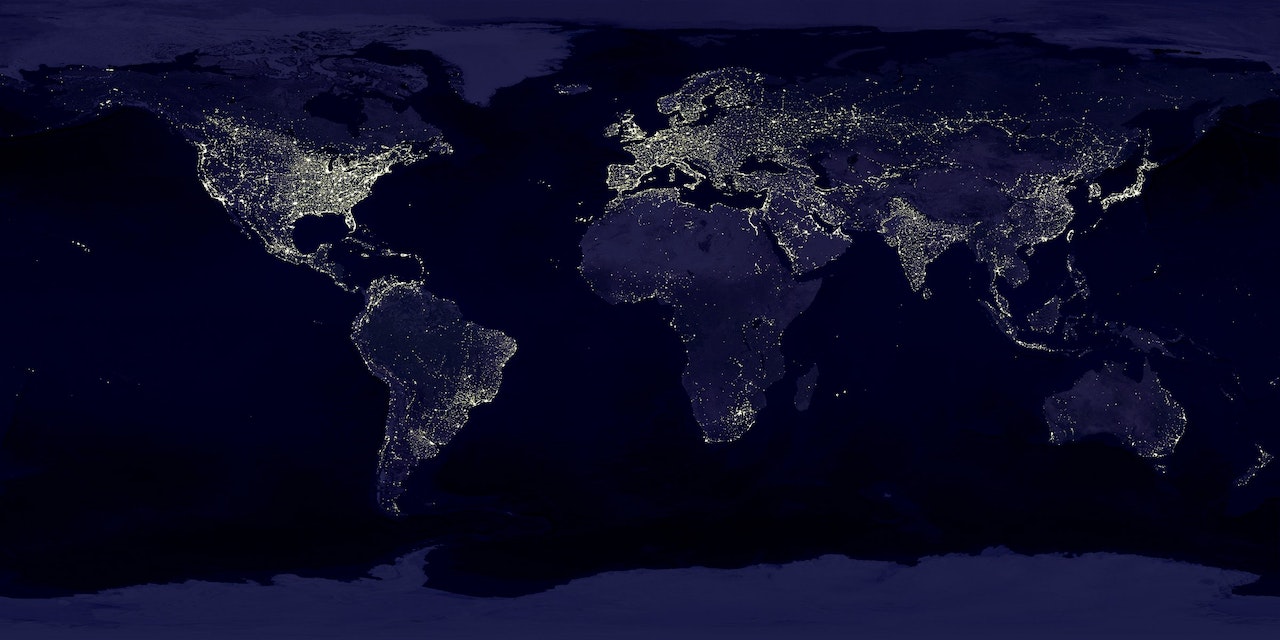|
Getting your Trinity Audio player ready...
|
The Internet of Things (IoT) is a rapidly evolving technology changing how we interact with everything. From home appliances to the cars we drive to and from work.
As we move towards the second half of 2023, several IoT trends are picking up steam and will shape the digital landscape in the future.
These trends will, without a doubt, revolutionize how we live, work, and play. But what is the catalyst behind these emerging trends?
It all boils down to technological advances, changes in consumer behavior, and breakthrough business models.
So today, we’ll explore the top five IoT trends that’ll significantly impact the digital world in 2023 and beyond.
1. Digital Twins and the Rise of the Enterprise Metaverse
2023 is the year of digital twins — and the rabbit, according to the Chinese calendar.
But in all seriousness, digital twins are rapidly emerging as a critical technology revolutionizing businesses’ operations.
A digital twin is a virtual representation of a real-world object, system, or process. It enables businesses to simulate, monitor, and optimize their operations.
And according to a McKinsey report, digital twins are becoming the foundation for the enterprise metaverse — a fully immersive and interconnected virtual world encompassing all aspects of our physical reality.
The concept of the Metaverse is gaining traction, and digital twins will play a critical role in building this virtual world.
Why do you think Facebook changed its name to Meta? They are doubling down on the Metaverse, and you don’t want to miss out on this trend.
Mark Zuckerberg said, “the metaverse is the next frontier, just like social networking was when we got started.”
By creating a virtual representation of the physical world, digital twins provide the foundation for businesses to build immersive and interconnected virtual environments.
For instance, a digital twin of a manufacturing plant can simulate and optimize production processes, reducing downtime, improving efficiency, and minimizing costs.
However, building the Metaverse presents several challenges, including interoperability, privacy, and security. Businesses must establish a common standard for digital twins to ensure they’re usable across different platforms and systems.
And not to mention the privacy and security concerns over the collected data. Despite these challenges, Digital Twins will become a critical technology in building the Metaverse and driving innovation in the years to come.
2. Healthcare Takes Center Stage
Let’s face it. The past three years or so have taken a significant toll on the healthcare system in the United States. There was COVID-19, followed by numerous variants, and then RSV.
Sometimes it feels like a never-ending boulder rolling down the hill, collecting moss. But instead of seeing it as a setback, some companies use it as an opportunity for innovation.
And 2023 is the year that healthcare takes center stage. Literally.
“This small thing is the next big thing,” Nick Jonas shared with 113.06 million viewers during the Dexcom G7 Super Bowl commercial on February 12.
Why? The new Dexcom G7 Continuous Glucose Monitoring (CGM) System is setting a new standard of care for people living with diabetes.
How? It delivers real-time glucose numbers 24/7 to a smartphone or smartwatch with no fingersticks, scanning, or calibrations required.
For anyone familiar with diabetes management, that’s huge. Nick Jonas, a type-one diabetic and musician, thinks so too.
Another wearable making waves in the healthcare space is Alio, which won the 2023 IoT Health & Wellness Company of the Year award.
The Alio SmartPatch uses sensing technology to check for problems in dialysis patients and collect data like temperature, oxygen saturation, and blood pressure.
And the increasing popularity of wearable technology doesn’t stop at humans. In fact, for pets, GPS trackers and fitness monitors are also picking up steam. And that means pet insurance companies can gather more data and provide personalized coverage options.
The IoT is changing healthcare as we know it. Helping people (and animals) live longer, healthier, and less restrictive lives. Cheers to that.
3. Security Remains Top of Mind
As mentioned earlier, security is one of the main concerns with all technological advancements as we move closer to an increasingly digital world.
That means there’s plenty of demand for innovations that enhance the security of our proprietary data and introduce additional preventative measures against cyber threats.
Since cookies are an integral part of the digital world, it’s unsurprising that all websites must have a proper cookie consent policy. This policy properly protects users’ rights and the data collected about them. But that’s just the tip of the iceberg.
The growth of IoT technology has sparked a transformation in enterprise operations, with IoT devices now making up 30% of total devices on enterprise networks.
The rich data these devices collect gives businesses valuable insights to make real-time decisions and develop accurate predictive models.
However, the interconnectedness of smart devices poses a significant challenge for enterprises, as unsecured and unmonitored devices connected to the network can pose grave security risks.
Without proper security measures, IoT devices can quickly become the low-hanging fruit that leaves them vulnerable to cyber-attacks and data breaches.
Businesses must invest in good security and constantly monitor and manage their IoT networks to ensure all devices are secure and protected. Otherwise, it could cost millions in damages.
4. IoT and AI Become a Power Duo
Does your modern data stack include software powered by artificial intelligence (AI)? If not, it’s about to.
Like cryptocurrency in 2021, artificial intelligence is taking over the news headlines in 2023.
ChatGPT is the current buzzword, with Microsoft investing billions in the conversational AI tool. And Google’s not far behind with the introduction of Bard a few weeks ago.
Are search engines changing as we know them? Will hiring freelancers turn into a thing of the past?
It’s too early to tell. But when IoT and AI come together, amazing things are possible. Here are a few examples:
- Real-time decision-making: IoT devices generate vast amounts of data, but AI is the powerhouse that helps make sense of this data in real-time.
- Predictive maintenance: AI can analyze data from IoT sensors to predict when a device or system will likely fail. This duo enables proactive maintenance, reducing downtime and cost savings.
- Autonomous operations: By combining IoT and AI, enterprises can develop autonomous systems with minimal human intervention.
- Personalized experiences: IoT devices can collect data on individual users, such as their preferences and behavior. AI can analyze this data to deliver personalized experiences, such as customized product recommendations.
And the transportation industry is among the top players leveraging the power of this dynamic duo.
For instance, a connected vehicle can improve safety by reporting hazards or obstructions on the road ahead of the driver through various methods (e.g., visual alerts on dashboard screens, vibrating seats, or integrated AI dash cams).
Some systems also have features that allow vehicles to alert each other if they sense trouble ahead (e.g., an impending collision).
This technology is especially helpful for commercial trucks, improving delivery times and keeping drivers safe. It’s a win-win.
5. Smart Cities Make Continued Progress
A comprehensive study by The Insight Partners projects that the global smart city market will be worth $3,110.58 billion by 2028, with a compound annual growth rate (CAGR) of 19%.
The increasing adoption of smart city technologies, including IoT, artificial intelligence, and big data analytics, is the driving force behind the rapid growth.
Smart city solutions offer a range of benefits, including improved urban planning, increased energy efficiency, and enhanced citizen services.
Governments and private enterprises invest heavily in these solutions to meet the growing demand for sustainable and efficient urban infrastructure.
For instance, Chatanooga, TN, recently partnered with Seoul Robotics to create a lidar-based traffic management system. This system provides real-time traffic flow and congestion data.
The technology will enable the city to make data-driven decisions to optimize traffic management. And it’ll also help detect accidents and other incidents, allowing emergency responders to arrive more quickly.
Chattanooga’s use of lidar technology for traffic management is part of a broader trend of cities adopting smart technologies to improve urban infrastructure and services.
Cities can reduce congestion, improve safety, and enhance the overall urban experience for residents and visitors using data and technology to optimize traffic flow.
Soon you’ll no longer notice yard sale posters made from free templates nailed to telephone poles at every city intersection. Instead, you’ll see a variety of lidar, weather, and air quality sensors capturing data 24/7.
Overall, the smart city market will experience significant growth in the coming years, driven by the increasing adoption of smart technologies and the need for sustainable urban infrastructure.
Wrapping up
With 2023 underway, it’s clear that IoT will continue to play a key role in driving innovation and progress. Through various industries, from healthcare to manufacturing to transportation and beyond.
Businesses will need to stay ahead of these trends and harness the power of IoT to drive growth and stay competitive in future years.
Featured Image Credit:


